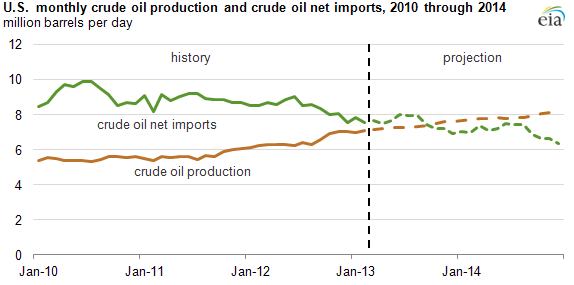There is a distinct possibility that low natural gas prices are less accidental than they seem most observers. Natural gas competitors are being weakened by being forced to either stop selling or to sell their product at prices that provide little, no, or negative margin above cost.
By pursuing horizontal drilling and hydraulic fracturing technology as rapidly as possible, gas suppliers have successfully lowered the price at which they are selling their fuel to a level that is unprofitable for most of their less heavily capitalized competitors. Since most gas extractors also extract oil, they have been able to finance their unprofitable gas operations from the healthy profits obtained by selling liquid petroleum at prices that are five times as high today as they were a dozen years ago.
 Back in the mid-2000's, the general consensus in the energy industry was that nuclear energy growth in the United States had the potential to considerably expand the nuclear industry. In fact, plans were to build 28 new reactors at an estimated cost of about $4 billion to $5 billion apiece. The nuclear industry was enjoying renewed political support after decades of opposition from environmental groups and others concerned about the risks. An increasing number of lawmakers in both parties, worried about global warming and dependence on foreign oil, support some expansion of nuclear power.
Back in the mid-2000's, the general consensus in the energy industry was that nuclear energy growth in the United States had the potential to considerably expand the nuclear industry. In fact, plans were to build 28 new reactors at an estimated cost of about $4 billion to $5 billion apiece. The nuclear industry was enjoying renewed political support after decades of opposition from environmental groups and others concerned about the risks. An increasing number of lawmakers in both parties, worried about global warming and dependence on foreign oil, support some expansion of nuclear power.Each large nuclear plant produces as much energy each day as 200 million cubic feet of natural gas burned in an efficient combined cycle gas turbine (CCGT) plant. When there was a prospect of 28 new plants — with many more to follow if those plants were successful — the natural gas industry was facing the prospect of permanently losing a lucrative market for their product. The initial loss upon completion of 28 new nuclear plants would be about 3 billion cubic feet per day, and that number had the potential for substantial growth.
Coal is an obvious target because it already has a large market share and it has numerous drawbacks that are easy to attack.
In fact it is so unpopular that natural gas advocates have declared a war on coal and have openly participated with financial support for efforts like the Sierra Club's Beyond Coal campaign. (The Energy Collective, 12/29/2013)





























